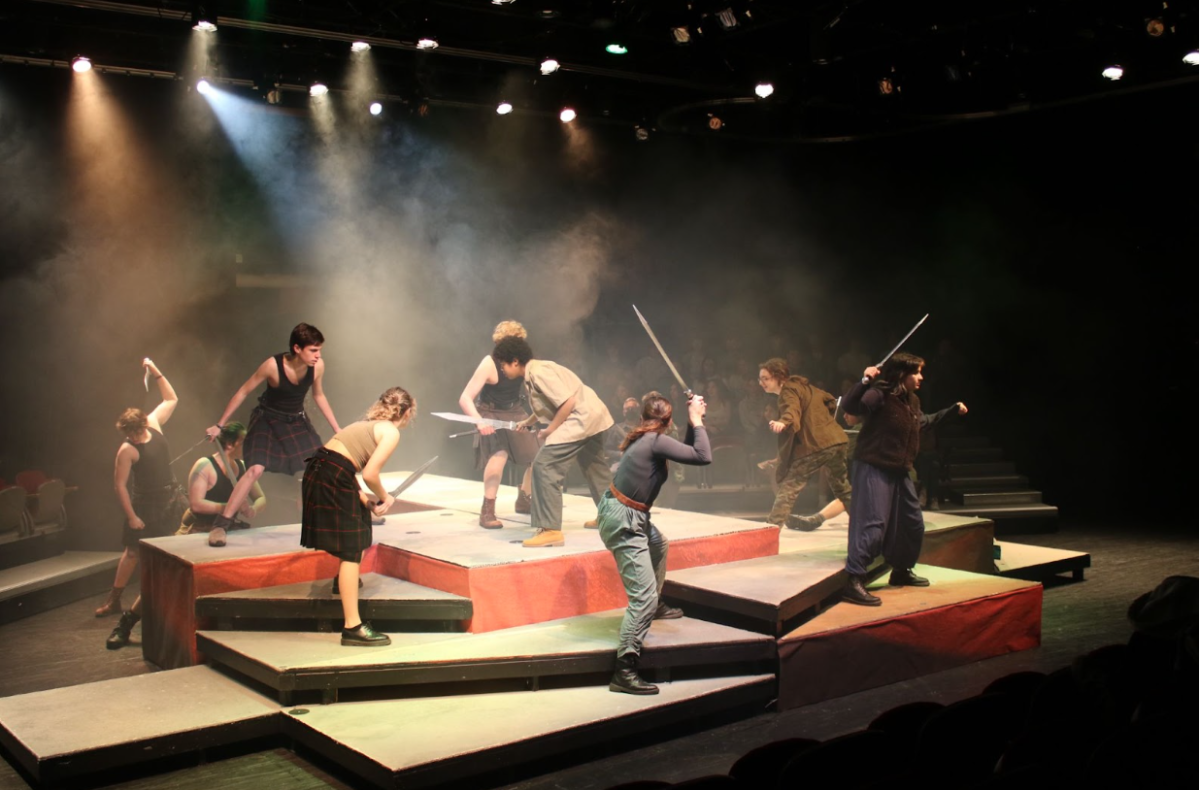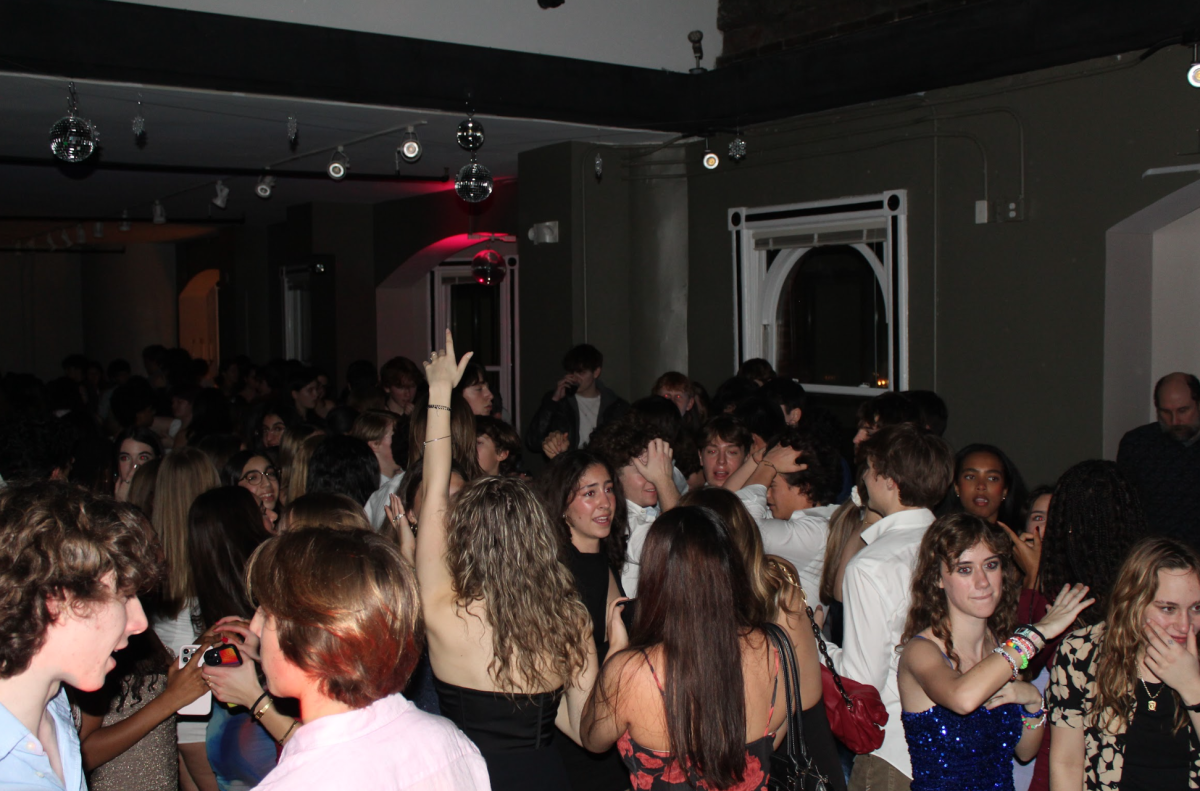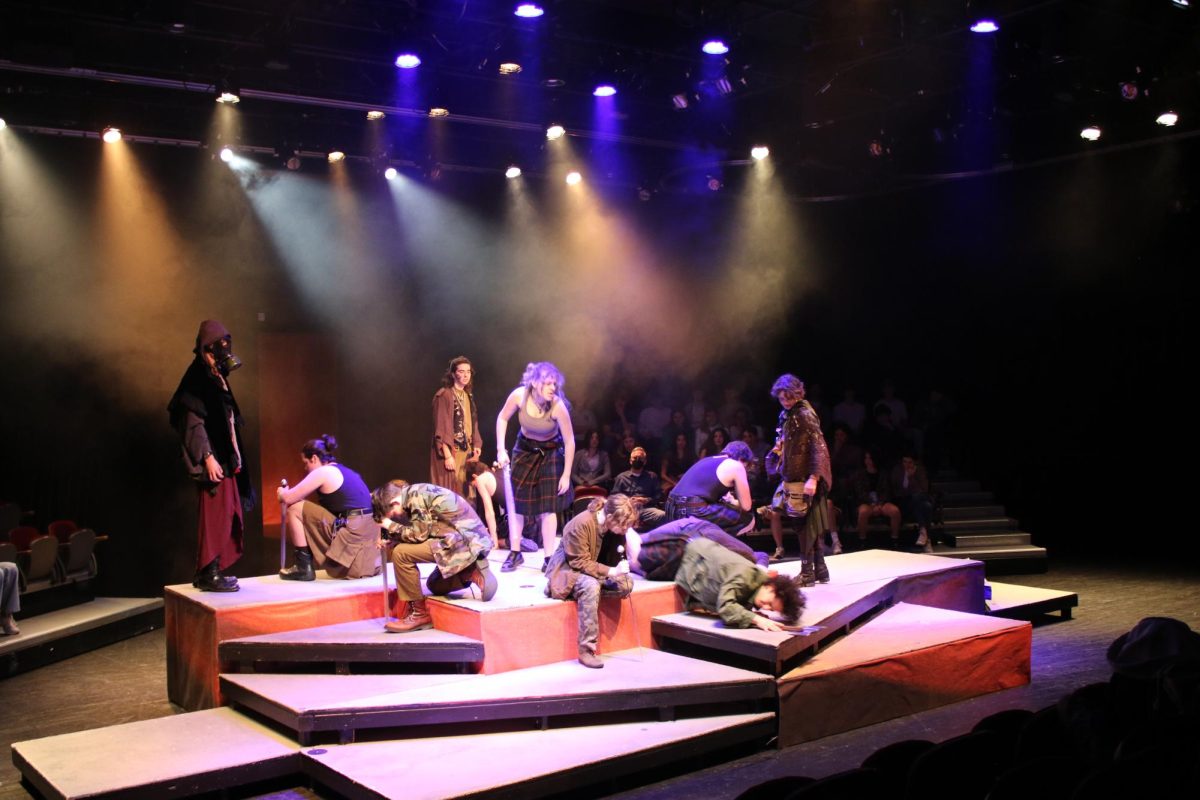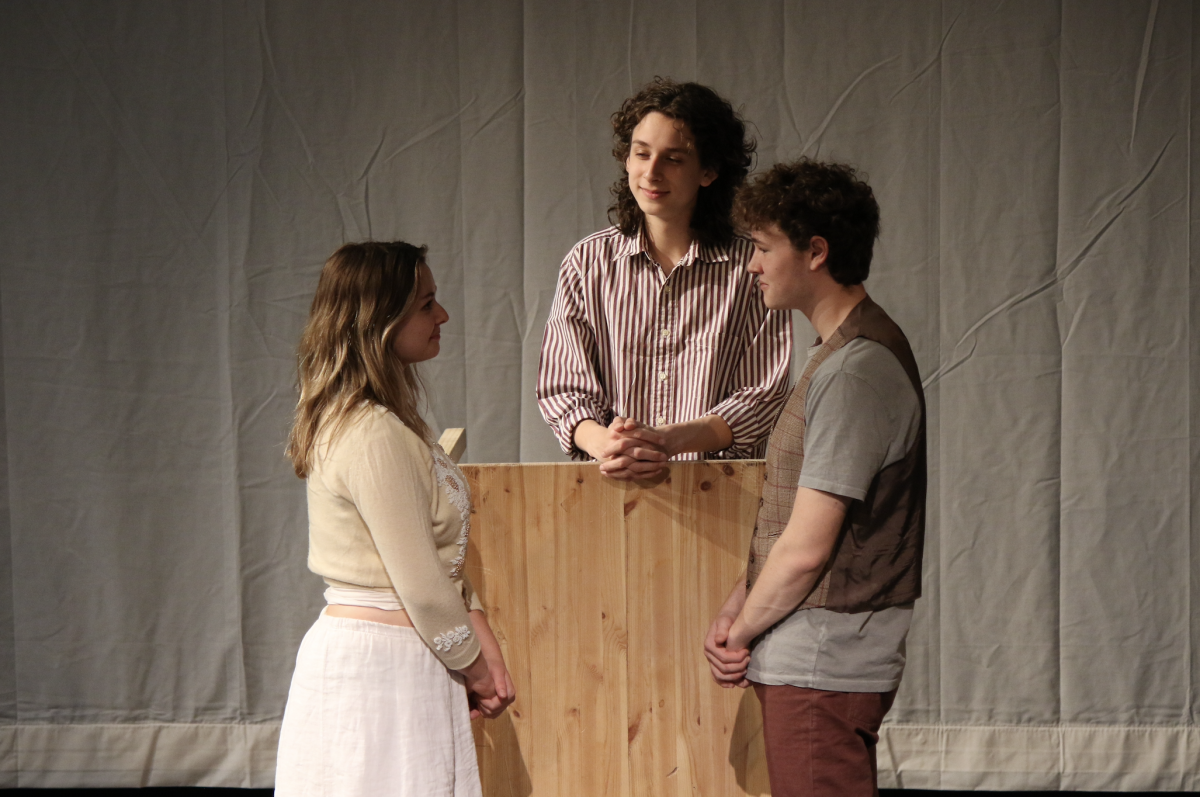Take an energetic, sensual woman, three witty men, and a compliant cat, put them on Shakespeare Theatre Company’s stage, and the nuanced portrayals of human relationships in Harold Pinter’s The Lover and The Collection come alive through dark humor and intriguing power struggles.
The Lover, the first of the production’s two one-act plays directed by Michael Kahn, follows Sarah (Lisa Dwan) and Richard (Patrick Kennedy), a couple who has been married for ten years. All outward appearances give the impression of a respectable, conventional marriage. However, it is soon revealed that, to keep their married life interesting, while Richard is out at work, Sarah’s lover, Max, comes to visit her at home. The catch? Max is just Richard in disguise, and Sarah is perfectly aware of this. The Lover is centered around the couple’s fantasies of consensual extramarital affairs, which have been going on for years and, we soon realize, are what keeps husband and wife together.
Because of dialogue that is at times difficult to understand, and a cryptic plot, the success of the show mainly rests on the actors, and in this particular performance they deliver wonderfully. The two actors have a very palpable connection, which manages to give life to the more mundane scenes, and their emotion feels so truthful that it becomes infectious, keeping audiences on the edge of their seats, waiting for what will happen next. Throughout the play, there is not a single moment that feels over the top or exaggerated, nor is there any scene that could have been played with more energy. The lived-in, comfortable looking set, as well as the warm lighting and short music breaks during blackouts also serve to enhance the sophisticated atmosphere that Pinter creates in the script.
One of the most interesting things about The Lover is how open-ended many of the scenes are. Certain interactions between Sarah and Richard leave you wondering whether Richard is still playing Max and acting out a normal part of their role play, or if he is actually trying to be honest with his wife when he argues that this fantasy of theirs has to stop. The entire play, from Richard’s first entrance as Max to the final line (which points towards a reconciliation between the two spouses, and tells us that their afternoon adventures will most likely not stop happening after all), blurs the line between reality and imagination. Nobody—not the audience, not the actors, and probably not even the characters of Sarah and Richard themselves—know where the couple’s real personalities end and their other personae begin. The two actors make this ambiguity come to life not only in their dialogues, but also in their silences, which they fill with body language and mannerisms that get the point across just well as any conversation.
The actors playing Sarah and Richard in The Lover become Stella and James in in the second play, The Collection. A young man, Bill (Patrick Ball), receives an unexpected visit from another man named James (Kennedy), who accuses him of having had an affair with his wife Stella (Dwan) while she was in Leeds. The whole plot is centered around various exchanges between the four characters, James, Stella, Bill, and Harry (the man Bill lives with, played by Jack Koenig), as they try to figure out what Bill and Stella really did in Leeds.
The performance is always bold and forceful, and slightly more comedic than The Lover. The fluffy kitten Stella strokes while lying on a couch as she silently observes the happenings on the other side of the stage makes audiences warm up to the play almost against their wills. Relationships between the characters are clear, but Pinter always weaves in a small element of mystery about them that the audience must uncover on their own. For example, are Bill and Harry more than just old friends? On stage, mostly thanks to Bill’s flamboyant personality, we get the impression that there is more between the two men than a simple friendship, dealing another big blow to British societal norms in the 1960’s. The stage, set up as James and Stella’s living room on one side, and Bill and Harry’s on the other, perfectly captures the personalities and individuality of each character.
However, not even the strength of the set and of the performance can distract from a certain redundancy in the plot. It feels like many scenes begin and end the same way: one character gives another a phone call, then shows up unannounced at their house where they have a conversation, and then leaves. Though the plot does evolve, it seems to do so in a repetitive pattern, which makes the play feels redundant, and at times takes attention away from the actors’ performance.
Overall, this double-bill might not be ideal for people who mainly enjoy productions with a simple, straightforward plot. However, the sets, lighting, and costumes (and adorable kitten), accompanied by performances that stay very truthful to the complex characters Harold Pinter created, make for a thought-provoking show that is definitely worth going to see.
By Ester Luna


































































